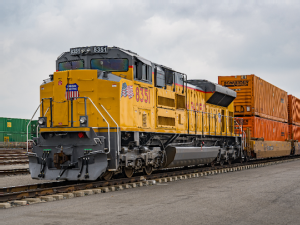The American Consumer Institute Center for Citizen Research (ACI) released today its latest report, which calls on the Surface Transportation Board (STB) – the economic regulator for freight railroads – to reject a proposed regulation that would have negative consequences for the nation’s freight railroads and American consumers.
The measure under consideration by the STB – which awaits Senate confirmation for three nominees – is known as “forced switching” or “forced access.” As the report notes, the measure would mandate that railroad operators allow traffic from competing railroads onto their privately owned and maintained rails at a rate dictated by the STB. ACI argues that this would limit negotiation between the parties and potentially set prices at an artificially low rate, forcing railroads to take significant losses and affecting their ability to reinvest in their private rail network.
“From our analysis, the proposed STB regulations fall well outside mainstream economy theory and fall well short of demonstrating benefits to consumers,” the report found. “Without economic evidence and based solely on complaints from lobbyists, the STB would be ill-advised to impose far reaching remedies, such as regulations that would expedite the use of forced access policies.”
The regulatory proposal, along with continued analysis by the STB on a current constraint known as “revenue adequacy,” come despite the successful efforts by Congress to partially deregulate the nation’s freight railroads in 1980, following decades of burdensome regulations from the now-defunct Interstate Commerce Commission (ICC). Those regulations nearly required the government to pay for costly bailouts for the U.S. railroad system. By relinquishing greater control to the private market and allowing railroads to compete for business, Congress’ reforms decreased both railroads’ operating costs and the price of consumer goods.
Partial deregulation of freight rail also further resulted in industry productivity and business volumes doubling along with a significantly reduction in rail rates. This has led to an estimated $10 billion in annual consumer economic benefits.
The report found that railroads invest almost $25 billion each year in U.S. infrastructure, but ambiguity and unnecessary regulation risk future cash flows and cause rail operators to raise capital costs. Thus, consumers will pay more for less.









